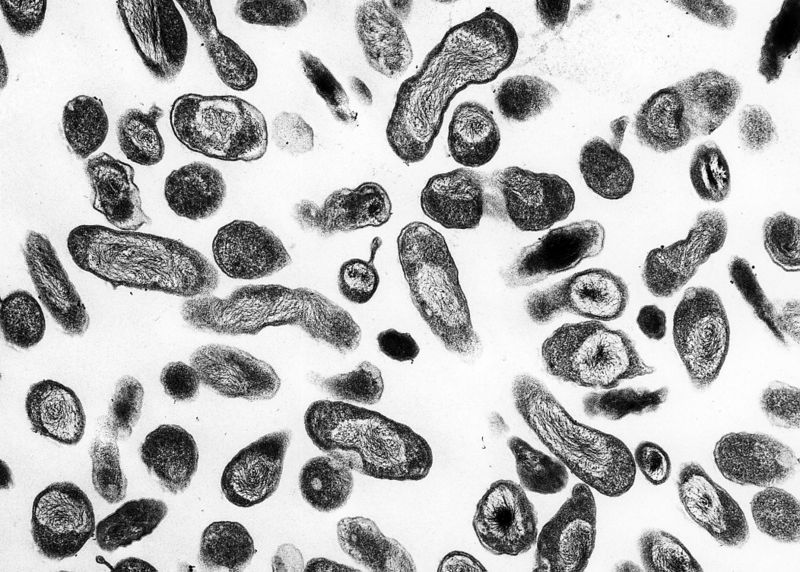Microsporidiosis pathophysiology: Difference between revisions
Ahmed Younes (talk | contribs) No edit summary |
Ahmed Younes (talk | contribs) No edit summary |
||
| Line 10: | Line 10: | ||
===Life Cycle=== | ===Life Cycle=== | ||
The infective form of microsporidia is the resistant [[spore]] and it can survive for an exteneded period of time in the environment. | The infective form of microsporidia is the resistant [[spore]] and it can survive for an exteneded period of time in the environment. | ||
{| style="float: right; width: 350px;" | |||
| [[Image:Coxiella burnetii.JPG|right|400px|C. burnetii, the Q fever causing agent]] | |||
|} | |||
# The spores enter the body via ingestion or inhalation. | # The spores enter the body via ingestion or inhalation. | ||
# The spore extrudes its polar tubule and infects the host cell. | # The spore extrudes its polar tubule and infects the host cell. | ||
Revision as of 17:21, 27 June 2017
|
Microsporidiosis Microchapters |
|
Diagnosis |
|---|
|
Treatment |
|
Case Studies |
|
Microsporidiosis pathophysiology On the Web |
|
American Roentgen Ray Society Images of Microsporidiosis pathophysiology |
|
Risk calculators and risk factors for Microsporidiosis pathophysiology |
Editor-In-Chief: C. Michael Gibson, M.S., M.D. [1]; Ogheneochuko Ajari, MB.BS, MS [2]
Overview
Microsporidia are a group of obligate intracellular parasitic fungi with more than 1,200 species belonging to 143 genera that infect a wide range of vertebrate and invertebrate hosts. They are characterized by the production of resistant spores that vary in size, depending on the species.
Pathophysiology
Life Cycle
The infective form of microsporidia is the resistant spore and it can survive for an exteneded period of time in the environment.
 |
- The spores enter the body via ingestion or inhalation.
- The spore extrudes its polar tubule and infects the host cell.
- The spore injects the infective sporoplasm into the eukaryotic host cell through the polar tubule.
- Inside the cell, the sporoplasm undergoes extensive multiplication either by merogony (binary fission) or schizogony (multiple fission).
- This development can occur either in direct contact with the host cell cytoplasm (E. bieneusi) or inside a vacuole called a parasitophorous vacuole (E. intestinalis). Either free in the cytoplasm or inside a parasitophorous vacuole, microsporidia develop by sporogony to mature spores.
- During sporogony, a thick wall is formed around the spore, which provides resistance to adverse environmental conditions. When the spores increase in number and completely fill the host cell cytoplasm, the cell membrane is disrupted and releases the spores to the surroundings.
- These free mature spores can infect new cells thus continuing the cycle.
Pathogenesis
- Microsporidia cause distortion of the villi without profound inflammatory findings.
- With the progression of the disease, the microsporidia interfere with the intestinal absorption causing various symptoms of malabsorption (weight loss, chronic diarrhea and vitamin deficiencies).
- Disseminated disease can cause symptoms in the biliary tract, respiratory system, the urinary tract or the eye.
Microscopic pathology
- Intestinal biopsy shows crypt hyperplasia and decrease in the absorptive surface of the intestine.
- Stool examination using “Quick-Hot Gram Chromotrope technique” reveals the spores staining dark violet and containing gram positive granules.
- Enterocytozoon bieneusi spores measure 0.8-1.4 µm while spores of Anncaliia algerae, Encephalitozoon spp., Vittaforma corneae, and Nosema spp measure 1.5-4 µm.